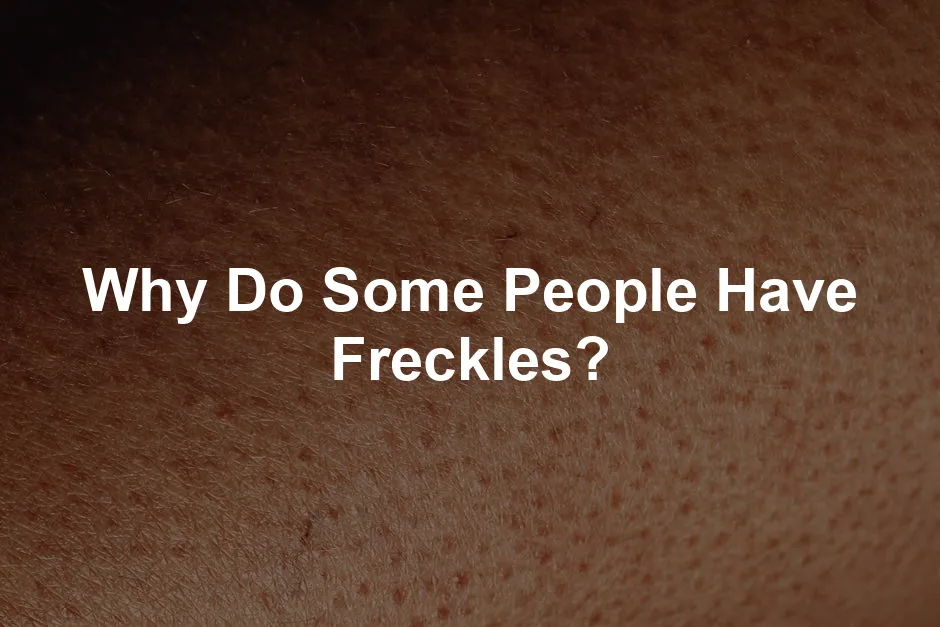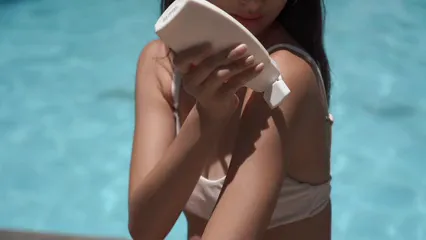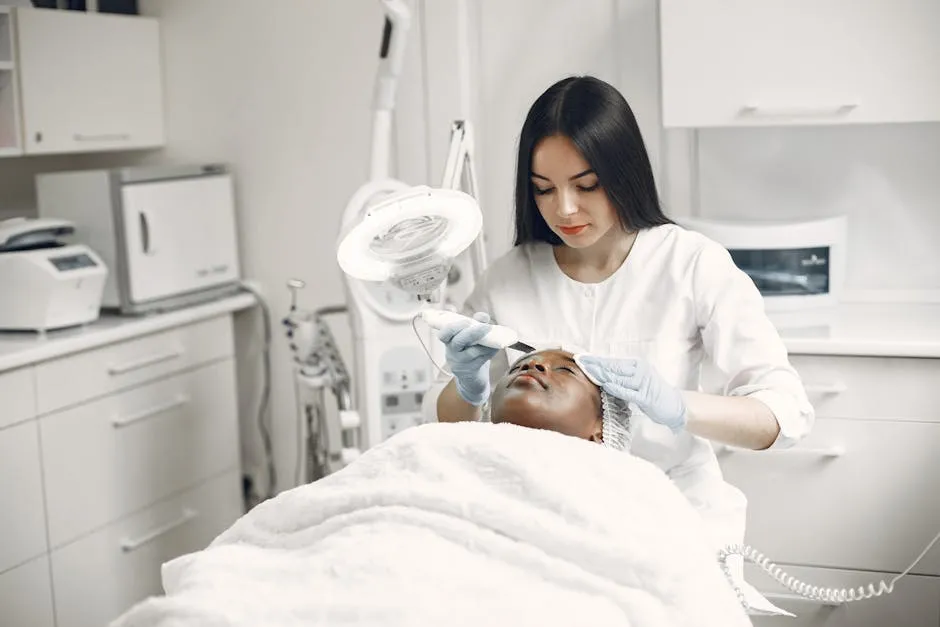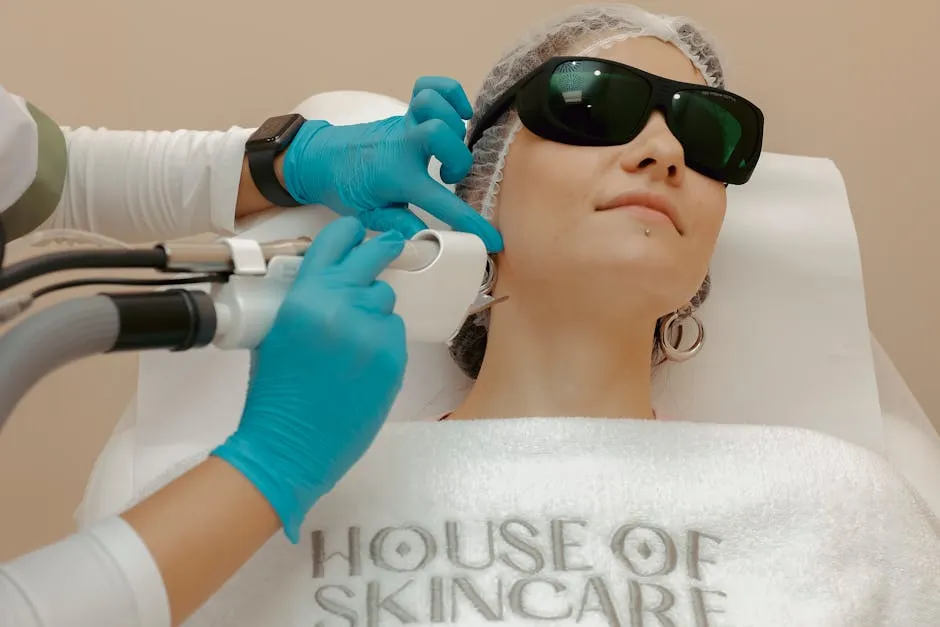
Why Do Some People Have Freckles?
Introduction
Freckles are those charming little spots that can make a person’s skin look like a constellation. Scientifically known as “ephelides,” these tiny patches of pigmentation are often associated with fair skin types. They tend to pop up on sun-kissed cheeks and noses, especially in individuals with lighter hair and eyes. But why do some people flaunt these adorable dots while others don’t?
Understanding freckles is not just a matter of aesthetics; it’s about genetics and the environment we live in. Factors like sun exposure and hereditary traits play a significant role in their formation. By exploring the reasons behind freckles, we can learn about their types and how to manage or treat them if desired. So, let’s uncover the science behind these delightful speckles!
If you’re out in the sun, don’t forget to protect your skin with a good sunscreen! I recommend Neutrogena Ultra Sheer Dry-Touch Sunscreen SPF 100. This powerful sunscreen not only shields your skin from harmful UV rays but also helps prevent those charming freckles from becoming even more prominent!

What Are Freckles?
Medically speaking, freckles are known as ephelides. They are small, flat spots that range in color from light brown to reddish hues. Freckles form when melanin, the pigment responsible for skin color, accumulates in certain areas, usually due to sun exposure. These spots are most commonly found on sun-exposed areas such as the face, arms, shoulders, and back.
The biological basis for freckles lies in melanocytes, the cells responsible for producing melanin. When skin is exposed to ultraviolet (UV) rays, these cells go into overdrive, producing more melanin to protect deeper layers of skin from damage. This overproduction results in the appearance of freckles, which often become more pronounced during summer months when sun exposure is at its peak.
Interestingly, freckles tend to show up more prominently in individuals with lighter skin tones. People with fair skin usually have less melanin overall, making these spots more visible. In contrast, those with darker skin tones may develop freckles as well, but they often appear as darker brown spots.
Freckles typically first appear in childhood, often around the ages of two to three. They can increase in number and intensity until one’s twenties, after which some may fade or become less noticeable, particularly during winter months. So, if you’ve ever wondered why some people are more freckly than others, it’s all about how our skin reacts to the sun and the amount of melanin produced.

Types of Freckles
Freckles come in two main varieties: ephelides and solar lentigines. Each type has its unique characteristics and appearance, influenced by genetics and sun exposure.
Ephelides are the most commonly recognized type of freckle. They often appear as small, flat spots that can range in color from light brown to reddish hues. Typically, these freckles are more prevalent in individuals with lighter skin tones, particularly those with blonde or red hair. They usually manifest during childhood and can increase in number and intensity with sun exposure. However, a fun fact is that ephelides tend to fade during the colder months when sun exposure is limited. So, if you’re freckly in summer but less so in winter, you’re not alone!
On the flip side, we have solar lentigines, often dubbed age spots or liver spots. Unlike ephelides, solar lentigines are generally larger and appear primarily in older adults, especially those over 50. These spots can develop on sun-exposed areas, such as the face, hands, and shoulders. What sets them apart is their permanence; once they appear, they usually don’t fade with reduced sun exposure. Solar lentigines are typically well-defined with clearer borders and can range from light yellow to dark brown. So, while ephelides might come and go with the seasons, solar lentigines are here to stay.
Understanding these two types helps to clarify why some people seem to have a galaxy of freckles, while others have just a few stubborn spots. Whether you embrace your freckles or prefer to keep them at bay, knowing the difference can help you appreciate your skin’s unique story.

Other Factors Influencing Freckles
Freckles are often linked to genetics and sun exposure, but other factors can influence their appearance as well. Hormonal changes, for instance, can play a significant role. During puberty, the body undergoes a whirlwind of changes. Hormone levels spike and fluctuate, which can lead to increased melanin production. This means some teenagers might notice new freckles popping up, especially if they spend more time outdoors.
Pregnancy can also bring about similar changes. Pregnant individuals experience hormonal shifts that can amplify melanin production. This is why some women may find their freckles becoming more pronounced during this time. It’s like a natural reminder that their skin is reacting to life changes, and sometimes these delightful spots become a part of the journey.
But wait, there’s more! Environmental factors can also contribute to freckle development. For example, exposure to certain chemicals, like those found in some skincare products, can lead to increased pigmentation. Even medications, particularly those that increase sensitivity to sunlight, may trigger freckles or darken existing ones. Imagine applying a new moisturizer, only to realize it’s making your freckles dance in the sunlight!
Now, let’s not forget about the seasons. While sun exposure can darken freckles, winter’s chill tends to keep them at bay. In fact, some people may notice that their freckles fade during the colder months, only to return with a vengeance when sunny days roll back around.
So, if you’ve ever wondered why your buddy suddenly has a constellation of freckles after a summer vacation, it could be a mix of hormonal changes, environmental influences, and, of course, the glorious sun! Understanding these factors helps demystify freckles and reminds us that our skin is always responding to the world around us.

Freckles vs. Other Skin Marks
Freckles are not alone in the skin mark family. They share the spotlight with sunspots and moles, each with their own unique characteristics and implications.
Freckles vs. Sunspots
Freckles and sunspots, or solar lentigines, can appear similar at first glance, but they have distinct differences. Freckles are small, flat, and usually light brown or reddish. They tend to appear on sun-exposed areas, particularly during childhood, and their visibility can change with the seasons. When summer hits, freckles often flourish, while winter can make them retreat.
In contrast, sunspots typically develop later in life, usually starting around age 40. They are generally larger and darker than freckles and are a result of prolonged sun exposure over the years. Unlike freckles, sunspots are permanent and do not fade significantly with reduced sun exposure.
The causes also differ slightly. While both are related to UV exposure, freckles are more influenced by genetic factors. Sunspots, however, are primarily the result of cumulative sun damage. So, if you’re counting your freckles after a beach day, remember they might just be saying, “Hey, we love the sun!” while sunspots are reminding you of sun-soaked summers past.

Freckles vs. Moles
Now, let’s chat about moles. Moles are distinct from freckles in both formation and appearance. Moles (or nevi) are clusters of pigmented cells that can be flat or raised, and they vary in color from brown to black. Unlike freckles, moles can appear anywhere on the body, and some people are born with them, while others develop them over time.
Moles can also have health implications. While most moles are harmless, changes in their appearance—like irregular borders or color changes—can warrant a visit to the dermatologist. Freckles, on the other hand, are generally benign and don’t pose a risk of skin cancer on their own, though their presence may indicate a higher sensitivity to UV radiation.
In summary, while freckles, sunspots, and moles may share the same sun-kissed stage, they each have their unique script in the skin story. Understanding these differences helps in recognizing what’s happening on our skin and when it’s time to seek professional advice.

Managing and Treating Freckles
For those wishing to lighten or remove freckles, various options are available. Whether you prefer over-the-counter solutions or professional treatments, there’s something for everyone. Here’s a rundown of the most popular methods.
Over-the-Counter Treatments
If you’re looking for a quick fix, over-the-counter products can be quite effective. Consider using alpha hydroxy acids (AHAs) and retinoids. AHAs, like glycolic acid, gently exfoliate the skin, promoting cell turnover. This process can help fade freckles over time. Meanwhile, retinoids, derived from vitamin A, can also encourage skin regeneration and reduce pigmentation.
Speaking of effective treatments, you might want to try CeraVe Hydrating Facial Cleanser. This gentle cleanser not only removes impurities but also helps maintain your skin’s natural moisture barrier, making it an essential part of any skincare routine!

Professional Treatments
For those seeking more dramatic results, professional treatments can be the way to go. Laser therapy is one of the most effective options. This treatment uses focused light to target and break down the pigmentation in freckles. As a bonus, it often leaves surrounding skin unharmed. Multiple sessions might be required, but many people find the results worth it.
Chemical peels are another popular choice. These treatments involve applying a solution that exfoliates the top layers of skin, revealing a fresher, more even complexion beneath. Depending on the type of peel used, recovery times can vary. Always consult with a dermatologist to determine which option suits your skin type best.
Lastly, cryotherapy, or freezing, can also be effective. This technique involves applying liquid nitrogen to the freckles, which helps to reduce their appearance. While it might sound daunting, many find it quick and relatively painless.

Prevention Strategies
Preventing new freckles from developing hinges on sun protection. Here are some top tips to keep those spots at bay:
- Sunscreen: Always apply a broad-spectrum sunscreen with an SPF of 30 or higher. This should be a daily habit, applied even on cloudy days.
- Protective Clothing: Wear long sleeves, wide-brimmed hats, and sunglasses when outdoors. This not only shields against the sun but also adds a stylish touch to your outfit!
- Seek Shade: Whenever possible, find shade, especially between the sun’s peak hours, around 10 a.m. to 4 p.m. Your skin will thank you for it!
- Regular Skin Checks: Keep an eye on your freckles and any changes in them. Early detection of any irregularities can lead to better outcomes.
By combining effective treatments with preventative measures, you can manage your freckles while protecting your skin’s health. Embrace your unique skin story, and remember: freckles are just one part of what makes you, you!

And while you’re at it, don’t forget about your daily moisturizer! Try Olay Regenerist Micro-Sculpting Cream. This luxurious cream hydrates and plumps the skin, giving you that youthful glow while also tackling those pesky freckles!
Conclusion
In summary, freckles are lovely little spots that tell a story of genetics and sun exposure. They form when melanin, a pigment in our skin, clusters in certain areas. The MC1R gene plays a significant role in determining who gets freckles, especially in those with fair skin and red hair. Sun exposure amplifies their appearance, making them more pronounced during summer.
While freckles themselves are harmless, it’s essential for freckled folks to protect their skin. Sunscreen should be your best friend, offering that extra layer of defense against UV rays. Remember, freckles are not a cause for concern but rather a charming quirk of your skin. Embrace them, cherish them, and protect your beautiful complexion!

And to add a little brightness to your skincare routine, consider incorporating The Ordinary Niacinamide 10% + Zinc 1%. This serum can help reduce the appearance of skin blemishes and improve overall skin texture, making it a fantastic addition to your routine!
FAQs
Are freckles genetic or due to sun exposure?
Freckles are influenced by both genetics and sun exposure. The MC1R gene is a key player, making some individuals more prone to developing freckles, especially those with lighter skin tones. When these individuals spend time in the sun, their skin produces more melanin, leading to the formation of freckles. So, while genetics set the stage, sun exposure often brings out the show!
Can freckles disappear?
Yes, freckles can fade or even disappear over time. Factors like aging, seasonal changes, and reduced sun exposure contribute to this phenomenon. During winter months, many people notice their freckles becoming less visible. However, come summer, they often make a grand return. So, if you’re freckle-free in winter, don’t worry! They might just be hibernating.
What are the best ways to protect my skin if I have freckles?
For those with freckles, sun protection is crucial. Here are some sun safety tips: Always apply a broad-spectrum sunscreen with SPF 30 or higher. Reapply every two hours, especially after swimming or sweating. Wear protective clothing, such as long sleeves and wide-brimmed hats, when outdoors. Seek shade during peak sun hours, typically from 10 a.m. to 4 p.m. Avoid tanning beds, as they can exacerbate freckles and increase the risk of skin damage.
Do freckles indicate a higher risk of skin cancer?
While freckles themselves are not a direct indicator of skin cancer, individuals with freckles often have more sensitive skin and may be at a higher risk for UV-related skin issues. It’s essential to monitor any changes in your skin, including freckles. If you notice irregularities, such as changes in size, shape, or color, consult a dermatologist for evaluation. Regular skin checks can help catch any potential concerns early on, ensuring your skin remains healthy and happy.
Please let us know what you think about our content by leaving a comment down below!
Thank you for reading till here 🙂
If you want to learn more about the reasons behind freckles, check out our article on Why do some people have freckles.
All images from Pexels




